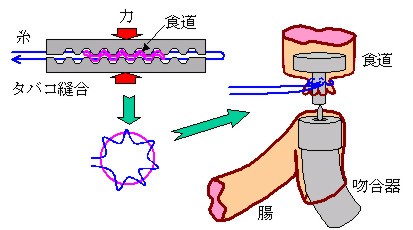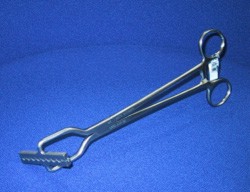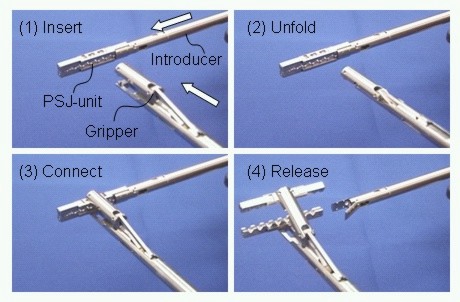Assemblable Pursestring Suture Instrument for Laparoscopic Surgery
In laparoscopic surgery, surgeons perform surgery in the abdominal cavity by using instruments inserted through trocars which are typically smaller than 12mm in diameter. This surgery does not make a large incision, and therefore patients can make quick recovery. However, instruments for laparoscopic surgery are slender because they need to be inserted through trocars. Large traditional instruments for abdominal surgery cannot be used. To overcome this problem, we have proposed assemblable instruments for laparoscopic surgery that can be disassembled to pass through a trocar and assembled inside the abdominal cavity to become large instruments. Pursestring suturing as shown in Figure 1 is an application of this idea.

Fig. 1 Pursestring suture

Fig. 2 Pursestring suture instrument
In total gastrectomy, the esophagus and the duodenum (or the clone) are anastomosed typically by using the anastomosing instrument as shown in Figure 1. To fix an anvil in the esophagus, pursestring suturing of the cut end of the esophagus is necessary. The traditional pursestring suture instrument shown in Figure 2 is T-shaped. To insert this, an incision of typically 7 to 8 cm is necessary. Clearly this is not desirable.
Therefore, we have developed the assemblable pursestring suture instrument shown in Figure 3. The introducer and the holder are inserted through two different torcars. The holder holds the suture unit rigidly to become a T-shaped instrument.

Fig.3 movie Assemblabling Process of Pursestring Suture Instrument for Laparoscopic Surgery(6.9MB Mpeg1)
Research Top




